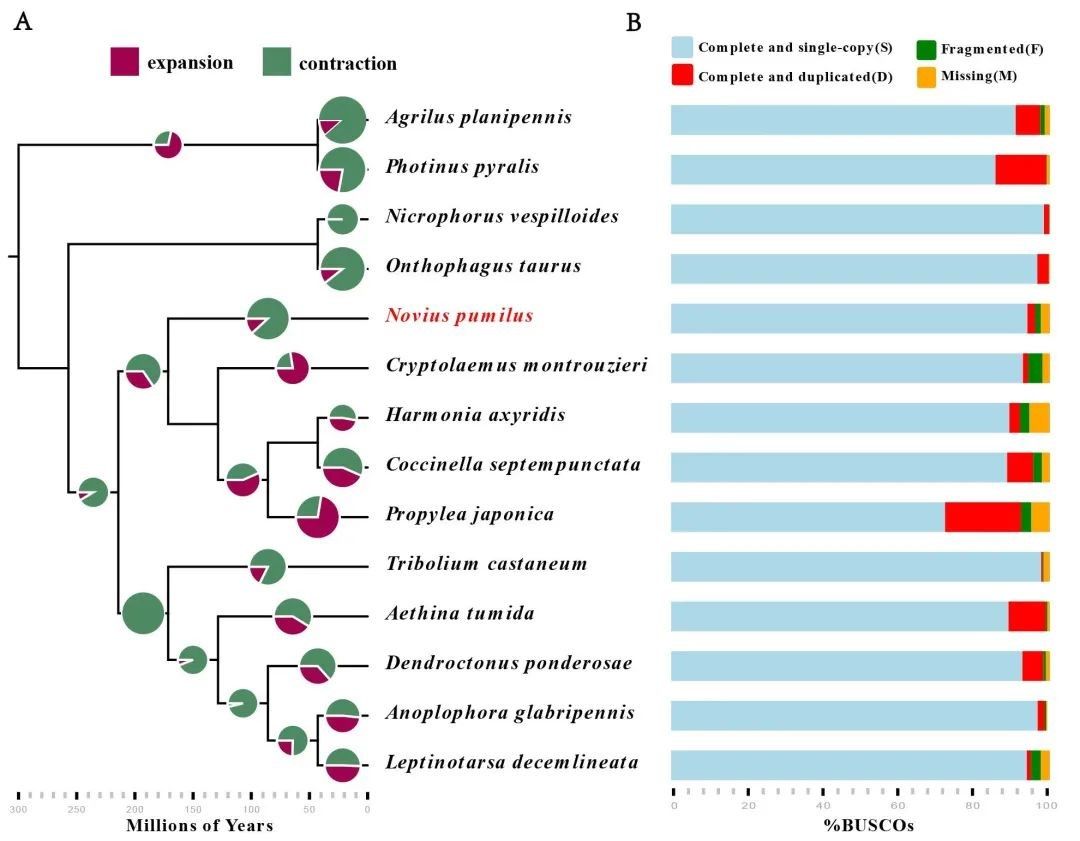Source: School of Ecology
Edited by: Zheng Longfei, Wang Dongmei
Many ladybird beetles are beneficial insects that are used for biological control of agricultural pests. In fact, about 70% of the ladybirds feed on insects like aphids and scales, while other beetles who are closely related to ladybirds mainly feed on fungi. So how did ladybirds evolve to be insect feeders? Why can they be excellent biological control agents? To answer the above questions, the research team led by Professor Hong Pang from School of Ecology, Sun Yat-sen University is trying to find out the molecular mechanism of feeding habit evolution of these fantastic group, with a series of results published in BMC Genomics (Chen et al. 2020; Li et al. 2021) and BMC Biology (Li et al. 2021). Recently, they published a new research article entitled “Genomic insight into the scale specialization of the biological control agent Novius pumilus (Weise, 1892)” in BMC Genomics, giving new insight into feeding evolution of ladybirds.

Figure 1. The ladybird beetle Novius pumilus feeding on Icerya scale insects
(photograph taken by Prof. Hong Pang in 2005 on Guangzhou South Campus, Sun Yat-sen University)
The ladybird beetle Novius pumilus is a specialist predator of Icerya scale insects. Based on a high‑quality genome of this species and a subsequent comparative genomic analysis, the authors found that several orthogroups encoding chemosensors, digestive, and immunity‑related enzymes were significantly expanded in N. pumilus compared to the published genomes of other four ladybirds. Furthermore, some of these orthogroups were under significant positive selection pressure. Notably, transcriptome profiling demonstrated that many genes among the significantly expanded and positively selected orthogroups, as well as genes related to detoxification were differentially expressed, when N. pumilus feeding on the nature prey Icerya compared with the no feeding set. In conclusion, the prey adaptation of this ladybird is mainly attributed to the evolution of genes related to chemosensing, digestion, detoxification and immunity.

Figure 2 Evolution of genes families and estimated completeness of the gene sets of 14 insect species. (A) Average expansion/contraction (radius of node circles), where for each circle, purple highlights the percentage of expanded gene families, and green highlights the percentage of contracted gene families. (B) Completeness of official gene sets of each insect species were assessed by applying the BUSCO pipeline
This work was supported by the National Natural Science Foundation of China (Grant No. 31970439 to Prof. Hong Pang), Science and Technology Planning Project of Guangzhou, China (Grant No. 201904020041 to Prof. Hong Pang and 202102020818 to Dr. Hao-Sen Li) and Guangdong Basic and Applied Basic Research Foundation (Grant No. 2021A1515011051 to Dr. Hao-Sen Li).
Publication information: Xue‑Fei Tang, Yu‑Hao Huang, Hao‑Sen Li, Pei‑Tao Chen, Huan‑Ying Yang, Yuan‑Sen Liang, Xue‑Yong Du, Zhen‑Hua Liu, En‑Feng Li, Yu‑Chen Yang and Hong Pang*. Genomic insight into the scale specialization of the biological control agent Novius pumilus (Weise, 1892), BMC Genomics, 2022, 23,90. https://doi.org/10.1186/s12864-022-08299-w
